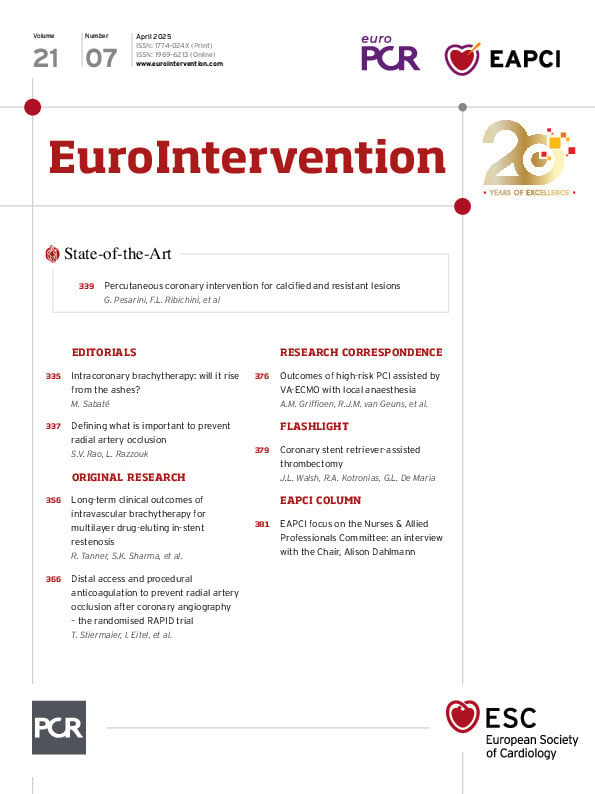In this era of ours when we’re surrounded by claims of false news and rumours, we are proud to provide you with regular infusions of clinical experience, key research, and thoughtful reflections on interventional cardiology and, along with our colleagues at other peer-reviewed medical journals, to be able to offer you science at its very best – challenging, insightful, and inquisitive.
Treatment of calcified coronary arteries
With a significant number of percutaneous coronary intervention (PCI) patients believed to have calcified coronary arteries, this state-of-the-art is highly relevant. Authors Gabriele Pesarini, Flavio Luciano Ribichini and colleagues review the current knowledge and best practices for the assessment and treatment of calcified coronary artery disease. In addition to a detailed discussion of imaging, devices and techniques, they also provide algorithms designed to help optimise the management and decision-making of complex instances of this disease.
Intravascular brachytherapy for multilayer in-stent restenosis
Intravascular brachytherapy (IVBT) has re-emerged as a potential treatment for multilayer in-stent restenosis (ISR), and Richard Tanner, Samin K. Sharma and colleagues examine the 3-year outcomes of patients with multilayer ISR undergoing PCI with or without IVBT. Although those who received IVBT had a lower rate of major adverse cardiac event rates, target lesion revascularisation continued to be a frequent issue, regardless of treatment modality. Manel Sabaté contributes an editorial on the past – and future potential – of IVBT.
Radial artery occlusion prevention strategies
The risk of radial artery occlusion (RAO) after transradial access is addressed by Thomas Stiermaier, Ingo Eitel and colleagues, who look at patients undergoing coronary angiography to compare RAO-related outcomes after the use of distal versus conventional transradial access sites, with or without periprocedural anticoagulation. The access site location had little impact on such a complication, but this study underlines the importance of systemic anticoagulation in reducing RAO. This article is accompanied by an editorial from Sunil V. Rao and Louai Razzouk.
Outcomes of VA-ECMO-assisted high-risk PCI
In a research correspondence, Alexander M. Griffioen, Robert Jan M. van Geuns and colleagues investigate the novel concept of whether venoarterial extracorporeal membrane oxygenation-assisted high-risk PCI can be performed with local anaesthesia, which would allow for smaller care teams and shorter hospitalisation periods.

